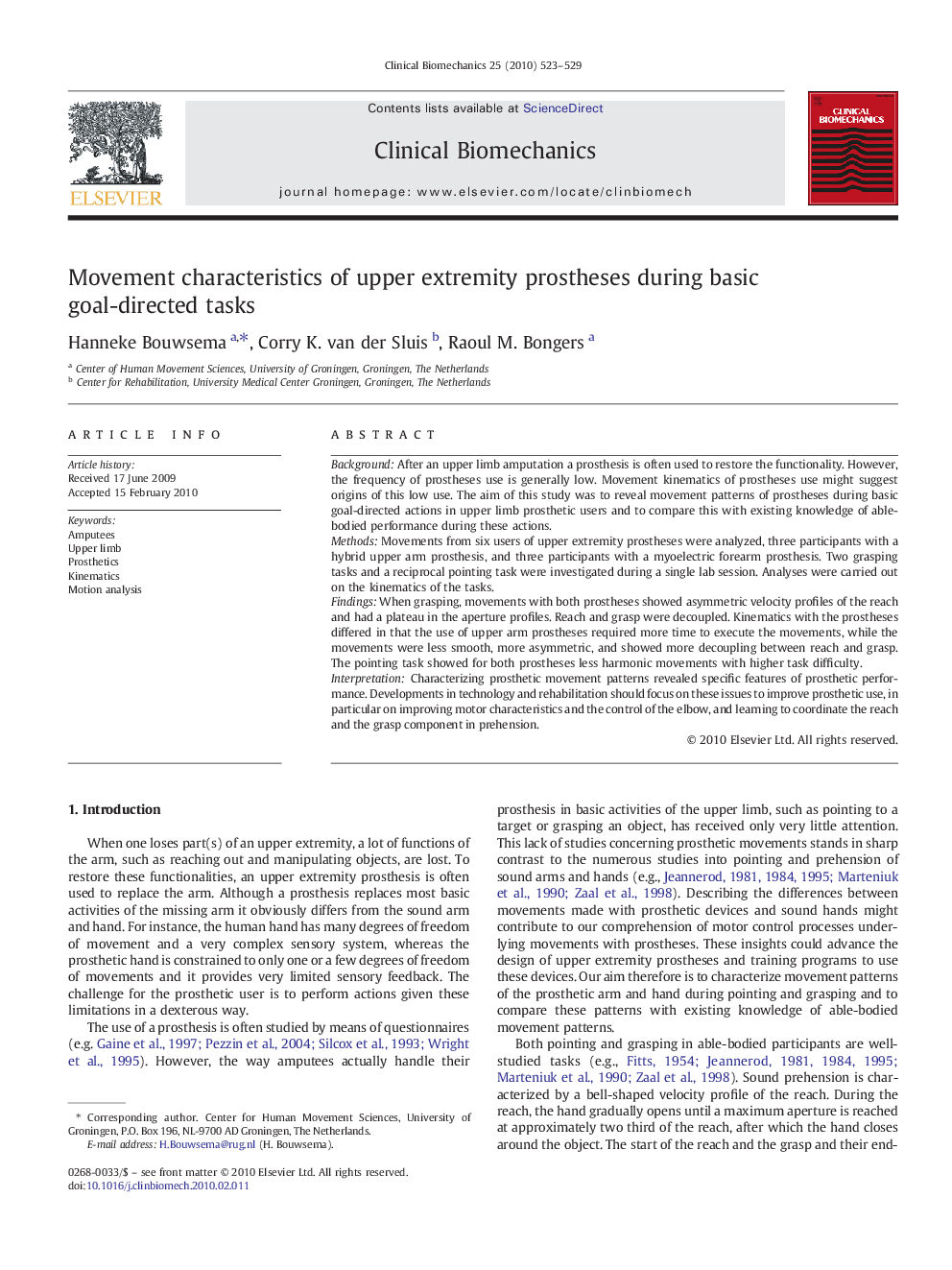| Article ID | Journal | Published Year | Pages | File Type |
|---|---|---|---|---|
| 4050737 | Clinical Biomechanics | 2010 | 7 Pages |
BackgroundAfter an upper limb amputation a prosthesis is often used to restore the functionality. However, the frequency of prostheses use is generally low. Movement kinematics of prostheses use might suggest origins of this low use. The aim of this study was to reveal movement patterns of prostheses during basic goal-directed actions in upper limb prosthetic users and to compare this with existing knowledge of able-bodied performance during these actions.MethodsMovements from six users of upper extremity prostheses were analyzed, three participants with a hybrid upper arm prosthesis, and three participants with a myoelectric forearm prosthesis. Two grasping tasks and a reciprocal pointing task were investigated during a single lab session. Analyses were carried out on the kinematics of the tasks.FindingsWhen grasping, movements with both prostheses showed asymmetric velocity profiles of the reach and had a plateau in the aperture profiles. Reach and grasp were decoupled. Kinematics with the prostheses differed in that the use of upper arm prostheses required more time to execute the movements, while the movements were less smooth, more asymmetric, and showed more decoupling between reach and grasp. The pointing task showed for both prostheses less harmonic movements with higher task difficulty.InterpretationCharacterizing prosthetic movement patterns revealed specific features of prosthetic performance. Developments in technology and rehabilitation should focus on these issues to improve prosthetic use, in particular on improving motor characteristics and the control of the elbow, and learning to coordinate the reach and the grasp component in prehension.
